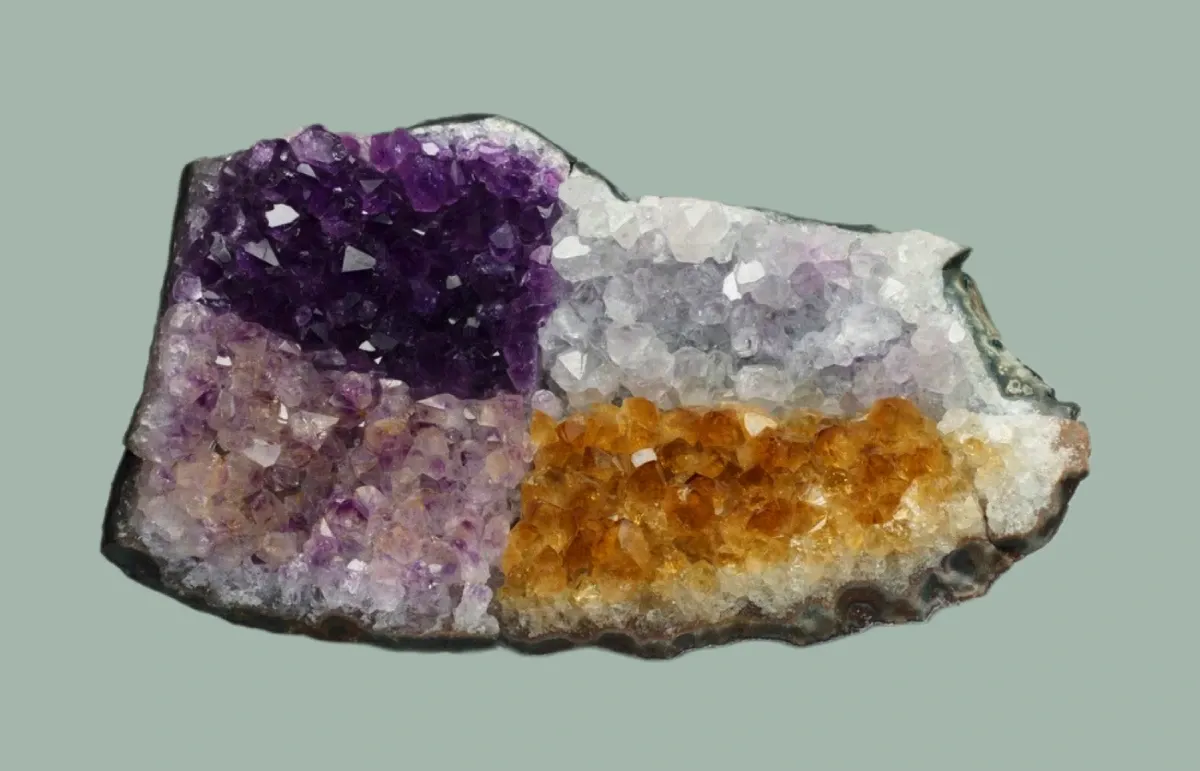How Amethyst Changes Color
Amethyst is a variety of quartz that is colored purple by iron impurities. The color of amethyst can range from light lavender to deep violet, and can even have reddish or bluish hues. Amethyst is generally known for its stability and resistance to fading. However, there are certain conditions and factors that can potentially contribute to a loss of color or fading in amethyst.
Prolonged Sunlight Exposure. Exposure to direct sunlight for extended periods can sometimes lead to the fading of amethyst. Ultraviolet (UV) radiation from sunlight can cause color changes in some minerals over time. It's advisable to avoid leaving amethyst jewelry or specimens in direct sunlight for extended periods to prevent potential fading.
Chemical Exposure. Amethyst can be sensitive to certain chemicals. Avoid exposing amethyst to harsh chemicals, including cleaning solutions, as they may damage the surface or affect the color.
Amethyst crystals can change color due to heat or ultraviolet (UV) radiation. When heated to temperatures above 300 degrees Celsius, amethyst loses its purple color and often turns yellow, orange, or brown. This is because the heat causes the iron impurities in the crystal to change their oxidation state.
Artificial Light. Prolonged exposure to certain types of artificial light, especially strong lighting with high UV content, may contribute to color changes over time.
It is important to note that not all amethyst crystals will change color in the same way. The color change will depend on the specific iron impurities in the crystal, as well as the temperature and duration of the heat or UV exposure.
 |
| Changes in color of amethyst by heat treatment and UV radiation. Credit: Amir Akhavan |
Change in the Color of Amethyst Crystals
Amethyst crystals can change color due to exposure to heat and radiation.- Heat treatment: When amethyst is heated to between 300 and 500 degrees Celsius, its purple color fades and it may turn yellow, orange, brown, or even colorless. The exact color change depends on the temperature and the duration of heating.
- Radiation: Exposure to high levels of radiation, such as from ultraviolet light or X-rays, can also cause amethyst to lose its color. This is why it is important to store amethyst jewelry and other amethyst crystal items in a cool, dark place.
Amethyst Color Changing Experiment
A part of a deeply colored amethyst geode from Rio Grande Do Sul was cut into four pieces. Three of them were treated with heat or UV radiation. The four pieces were glued together again after treatment.- Top Left: Untreated, original color. Color seems to be evenly distributed in the tips, but is most intense 1-4 mm under the rhombohedral crystal faces.
- Top Right: Exposed to UV light from two 18W low pressure mercury lamps (germicidal UV-C lamps) for 3 months. The crystals have lost almost all their color, but some slightly violet patches are still visible inside some crystals. Fading proceeds relatively quickly in the beginning, but slows down with time. The complete bleaching would probably have required another 2-3 months of exposure.
- Bottom Left: Heating to about 380°C for 8 hours resulted in loss of most violet color and an overall patchy appearence. Some crystals are still colored violet in central parts while the outmost layers of the rhombohedral faces start to develop a yellow-brown color.
- Bottom Right: Heating to about 450°C for 12 hours. The violet color is gone, and a orange-brown color appears that is most intense close to the surface. Note that the most intense violet color of the untreated crystals is not directly at the surface, but a few millimeters inside the crystals.
Does Amethyst Fade in Sunlight
Yes, amethyst can fade in sunlight. The ultraviolet (UV) rays in sunlight can break down the color centers in the amethyst crystal, causing it to lose its purple color. The longer an amethyst crystal is exposed to sunlight, the more likely it is to fade.
How to Prevent Your Amethyst Crystals From Losing Color
How to Restore Amethyst Color
There is no way to restore the original color of a faded amethyst crystal. However, there are a few things you can do to slow down the fading process:- Store your amethyst crystals in a cool, dark place.
- Avoid exposing your amethyst crystals to direct sunlight or other sources of ultraviolet light.
- If you must wear your amethyst crystals in sunlight, try to cover them with clothing or wear sunscreen.
- Avoid heating your amethyst crystals.
- Be careful when cleaning your amethyst crystals, as some cleaning products can damage the color.
While amethyst is generally durable and stable, it's essential to handle it with care and be mindful of environmental factors to ensure its long-term beauty and color retention.
See also:What Causes the Purple Color of Amethyst?

%20(1).webp)






